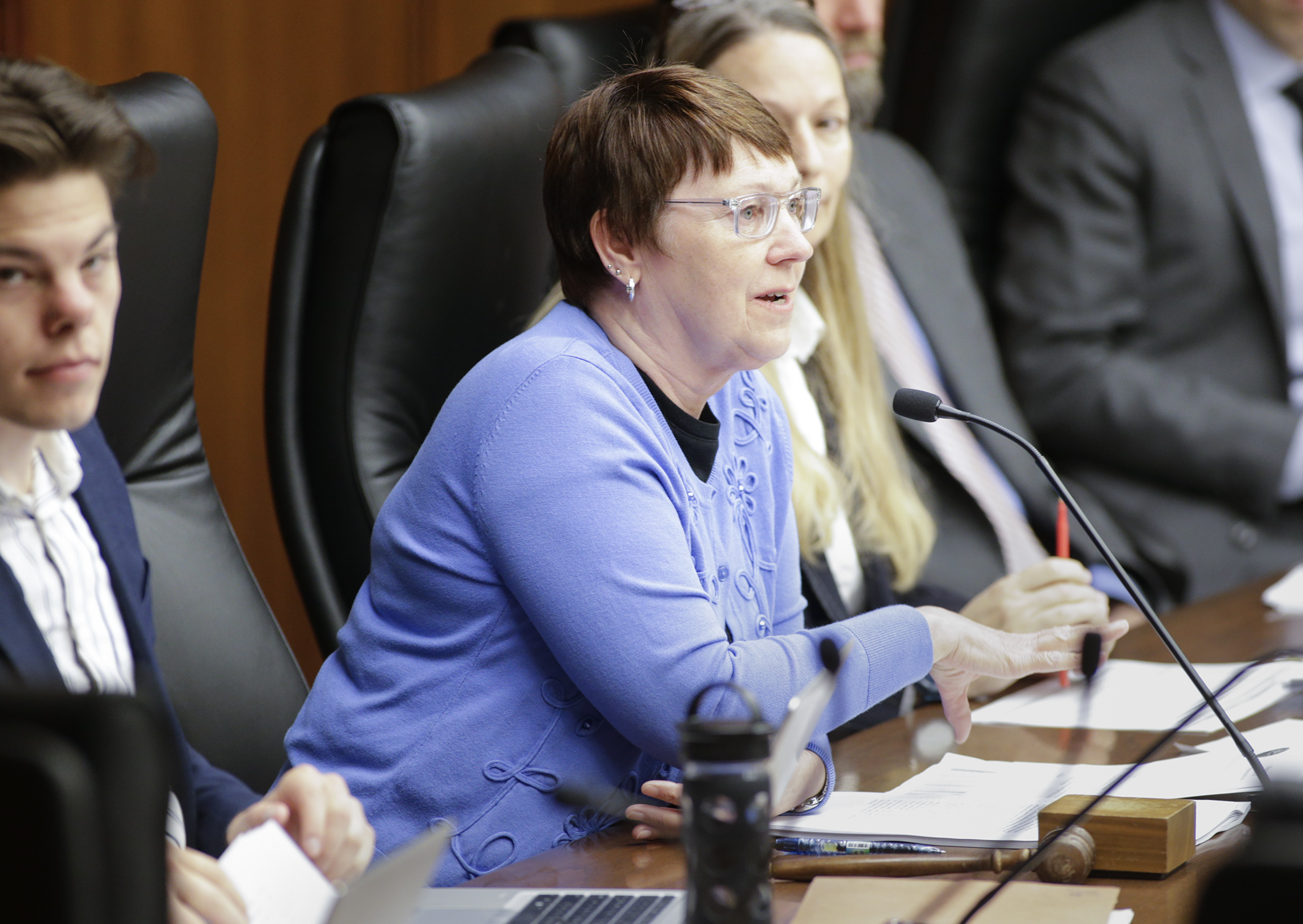Foiled at close of regular session, omnibus ag compromise gets public airing

Farmers, and at least a few legislators, were in wet fields Wednesday morning trying to get crops planted. Meanwhile at the Capitol, a sparse crowd gathered indoors for a walk-though of the compromise agreement reached late Monday on the omnibus agriculture department, rural development, and housing finance bill.
Presented Monday, about 30 minutes before the end of the 2019 regular legislative session, the clock ran out on a bill sponsored by Rep. Jeanne Poppe (DFL-Austin) and Sen. Torrey Westrom (R-Elbow Lake).
The compromise, expected to be voted on as a bill during an upcoming special session, details how the Department of Agriculture, Board of Animal Health, Agricultural Utilization Research Institute, Housing Finance Agency and Office of Broadband Development will spend $287.8 million in the 2020-21 biennium, an increase of $59.51 million over base. Of the increase, $40 million would be earmarked for broadband, $15 million for housing and $4.51 million for agriculture purposes.
[MORE – View the spreadsheet; See the compromise summary from the nonpartisan House Research Department]
Wednesday morning’s hearing focused on the agriculture portions of the compromise. Housing details and a spreadsheet are scheduled to be discussed at a Wednesday night meeting.
The House successfully negotiated for increased funding for a meat inspection program, agriculture marketing and trade programming, farmer mental health outreach, as well as funding to replace equipment at the Department of Agriculture’s Laboratory Services Division.
Other House provisions retained in the agreement include funding for:
- an Agriculture Department industrial hemp pilot program;
- Critical Core Capacity for Plant Pathogens and Pests program;
- incident management team, and;
- administration and staffing of the noxious weed program.
Successfully negotiated Senate provisions include:
- renaming the Rural Finance Authority farm livestock loan program to reflect the goal of farm modernization and prioritizing robotic dairy equipment purchase applications;
- clarifying pasture and feedlot rules allowing “sacrificial lands” to be used for greater concentrations of animals without a feedlot permit for up to 90 days in response to adverse conditions;
- funding prisoner vocational training;
- funding assistance to dairy farmers who enroll for five years of marketing coverage under the current federal farm bill;
- funding for soybean research;
- requiring the Agriculture Department to consult with the Department of Transportation to identify 10 parcels of land for urban agriculture; and
- modifying the Agriculture Department farm emergency response account to ensure it is used only for emergency response and not preparation.
Significant provision compromises include:
- requiring the Agriculture Department to develop recommendations on the ability and viability of a prohibition on labeling nursery stock pollinator-friendly if there are detectable levels of pesticides;
- modifying the biofuel incentives program from first-come, first-served payments to proportional payments to all eligible producers; and
- modifying grain buyer and storage licenses and inspection fees, setting financial reporting requirements and expanding accuracy statement requirements.
Related Articles
Search Session Daily
Advanced Search OptionsPriority Dailies
Ways and Means Committee OKs proposed $512 million supplemental budget on party-line vote
By Mike Cook Meeting more needs or fiscal irresponsibility is one way to sum up the differences among the two parties on a supplemental spending package a year after a $72 billion state budg...
Meeting more needs or fiscal irresponsibility is one way to sum up the differences among the two parties on a supplemental spending package a year after a $72 billion state budg...
Minnesota’s projected budget surplus balloons to $3.7 billion, but fiscal pressure still looms
By Rob Hubbard Just as Minnesota has experienced a warmer winter than usual, so has the state’s budget outlook warmed over the past few months.
On Thursday, Minnesota Management and Budget...
Just as Minnesota has experienced a warmer winter than usual, so has the state’s budget outlook warmed over the past few months.
On Thursday, Minnesota Management and Budget...